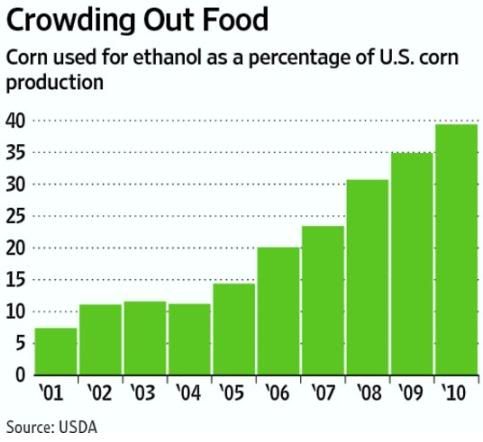
- Higher food and energy costs are starting to bite the American consumer.
- The U.S. is the largest corn exporter in the world and we are now using twice as much corn to produce ethanol as we are exporting.
- 35 million acres of the most productive farmland in the U.S. is being diverted to ethanol.
- Nearly forty percent of our corn production goes towards producing ethanol.
- Fifteen percent of global corn production is being used to manufacture ethanol in the U.S. This is having a ripple effect of driving food commodity prices higher world-wide.
- Other acreage is diverted to growing corn to capitalize on the high corn prices resulting from the ethanol program, driving up prices of soy, wheat, and other cereal grains.
- Soy and wheat are used as feed substitutes for corn further driving all commodity prices higher.
- Cattle, hog, and poultry meat producers have been struggling and reducing herds as feed costs skyrocket because of the U.S. corn ethanol program. Meat, dairy, and egg prices are escalating for the consumer.
- Though actual farm commodity costs are a smaller percentage for the American consumer since more food dollars go to processors and retailers, these corporations are beginning to pass on their higher commodity costs, driving up food prices at a time when unemployment is high and the consumer is struggling.
- In addition to paying higher food prices because of the ethanol program, the U.S. consumer supports the program through paying higher taxes, or the program would not be viable.
- Consumers in the world's poorer nations are more severely affected by high food commodity prices.
